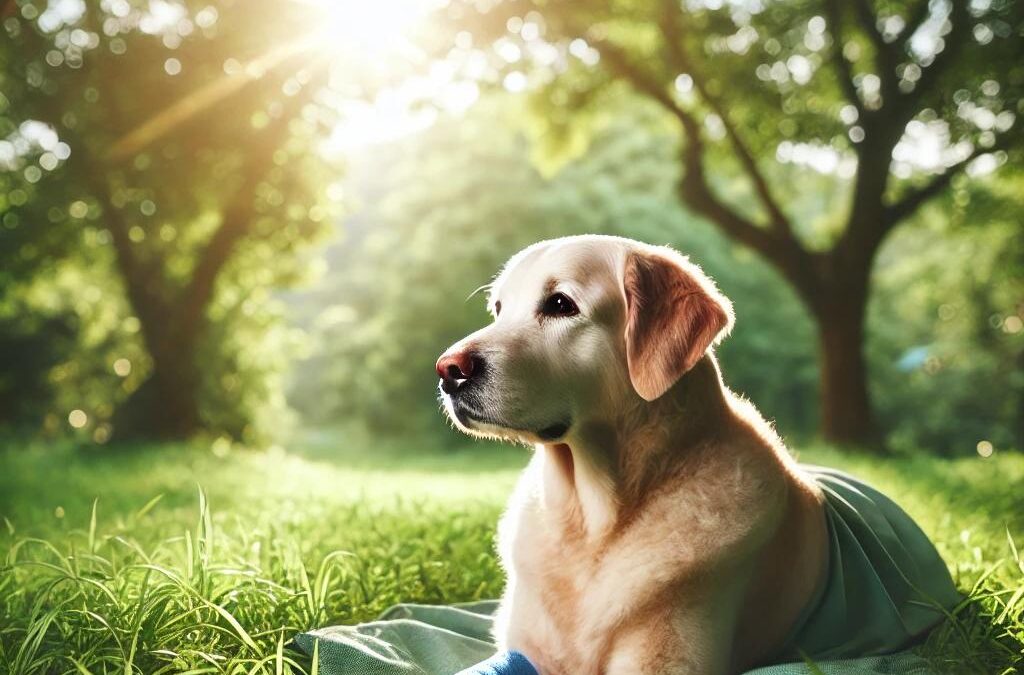Los tumores rotos en perros, especialmente los de tipo agresivo como los tumores de mastocitos, pueden ser alarmantes para cualquier dueño de mascota. Cuando un tumor estalla, puede provocar heridas abiertas, sangrado y un mayor riesgo de infección. Comprender cómo cuidar a un perro con un tumor roto y conocer las medidas preventivas puede ayudar a evitar complicaciones. En este artículo, analizaremos las causas comunes de la rotura de un tumor, las medidas inmediatas que se deben tomar y cómo controlar la salud a largo plazo de su perro.
Causas de la rotura de tumores en perros
Existen varios factores que pueden provocar la rotura de un tumor en los perros. Comprender estas causas puede ayudarle a minimizar el riesgo:
- Trauma físico
Los perros con tumores, especialmente los de gran tamaño, son más vulnerables a los traumatismos físicos. Actividades sencillas como saltar, correr o frotarse contra superficies pueden provocar la ruptura del delicado tejido tumoral. - Ulceración tumoral
Ciertos tipos de cáncer, como los tumores de mastocitos y los carcinomas de células escamosas, suelen desarrollar superficies ulceradas a medida que crecen. La ulceración debilita la capa externa del tumor, haciéndolo más susceptible a estallar. - Presión interna
A medida que los tumores crecen, a veces ejercen presión interna sobre los tejidos y vasos sanguíneos cercanos. Esta presión puede debilitar la estructura del tumor y, con el tiempo, provocar una ruptura.
Signos de un tumor roto
Reconocer los signos de un tumor roto puede ayudarle a reaccionar de forma rápida y adecuada. Algunos signos comunes incluyen:
- Sangrado o secreción del sitio del tumor
- Ulceración visible o herida abierta
- Hinchazón y enrojecimiento alrededor del tumor.
- Signos de dolor o malestar, como gemidos o cojera.
Si observa alguno de estos síntomas, es importante brindar atención inmediata y buscar asistencia veterinaria lo antes posible.
Medidas inmediatas a tomar cuando un tumor estalla
Si el tumor de su perro se rompe, tomar las medidas adecuadas rápidamente puede prevenir una infección y otras complicaciones. Esto es lo que debe hacer:
- Limpiar la herida
Utilice una solución salina estéril o agua limpia para limpiar suavemente la herida. Evite utilizar antisépticos fuertes como peróxido de hidrógeno o alcohol, ya que pueden provocar más irritación. - Aplique una presión suave para detener el sangrado
Si el tumor sangra, aplique una presión suave con una gasa o un paño esterilizados para controlar el sangrado. La mayoría de los sangrados menores deberían detenerse en unos minutos. - Venda la herida
Después de limpiar la herida y controlar el sangrado, cubra la zona con un vendaje limpio para protegerla de la suciedad y las bacterias. Asegúrese de cambiar el vendaje con regularidad. - Consult Your Veterinarian
Incluso si el sangrado se detiene, un tumor reventado necesita atención profesional. Su veterinario evaluará la herida, recetará antibióticos si es necesario y recomendará tratamientos adicionales, como cirugía o quimioterapia.
Tratamiento y prevención a largo plazo
Después de la atención inmediata, es esencial un tratamiento a largo plazo para garantizar la salud de su perro y prevenir futuras rupturas. Dependiendo del tipo y el estadio del tumor, su veterinario puede recomendar varios tratamientos:
- Extirpación quirúrgica
Si el tumor está localizado, la extirpación quirúrgica suele ser la mejor opción para evitar que siga creciendo o se rompa. La cirugía también puede ayudar a eliminar el riesgo de infección por heridas abiertas recurrentes. - Quimioterapia o radioterapia
En el caso de cánceres más agresivos, puede ser necesaria la quimioterapia o la radioterapia para reducir el tamaño del tumor y retardar su propagación. Estos tratamientos pueden ayudar a reducir la probabilidad de futuras rupturas al disminuir el tamaño del tumor. - Soporte nutricional
Una dieta saludable rica en nutrientes antiinflamatorios puede contribuir a la recuperación de su perro. Los suplementos como los ácidos grasos omega-3, la cúrcuma y los hongos medicinales pueden ayudar a reforzar el sistema inmunológico de su perro y promover la curación. - Medicina tradicional china (MTC) para cuidados paliativos
Las terapias a base de hierbas de la medicina tradicional china (MTC) pueden complementar los tratamientos convencionales y ayudar a la recuperación de su perro. Hierbas como Apio de monte (Chuanxiong) puede promover la circulación sanguínea y reducir la hinchazón, mientras que madreselva (Jin Yin Hua) puede ayudar a aliviar la inflamación y prevenir infecciones. Estos remedios naturales pueden ayudar a mantener el bienestar de su perro durante los tratamientos contra el cáncer.
Prevención de futuras rupturas tumorales
Si bien no todas las rupturas de tumores se pueden prevenir, hay medidas que puede tomar para reducir el riesgo:
- Controle periódicamente el tumor de su perro: Vigile el tamaño, la textura y el aspecto del tumor. Informe de inmediato a su veterinario sobre cualquier cambio.
- Limite la actividad física:Si su perro tiene un tumor grande o vulnerable, considere restringir las actividades que puedan causarle trauma, como juegos bruscos o caminatas largas.
- Proteger el sitio del tumor:Su veterinario puede sugerirle utilizar una cubierta protectora o un vendaje para proteger el tumor de la fricción o el impacto.
La rotura de un tumor en un perro es un problema médico grave que requiere atención inmediata. Si comprende las causas, actúa rápidamente cuando se produce la rotura y sigue un plan de atención integral a largo plazo, puede ayudar a su perro a recuperarse y prevenir complicaciones futuras. Con la combinación de tratamientos convencionales y terapias de apoyo como la medicina tradicional china, su perro puede mantener una mejor calidad de vida mientras lucha contra el cáncer.















